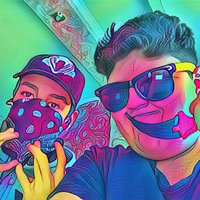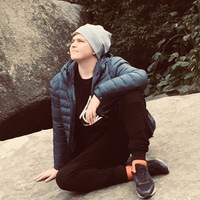
Переведите пожалуйста #3. Working in Order One of the biggest time wasters that a new tattoo
artist can face is having to redo a stencil. This can happen because the original placement wasn’t correct, because it didn’t transfer fully, or—perhaps most frustratingly—because the artist himself has smeared or rubbed the transfer off of the skin. There are a few tattooing techniques that can remedy these situations. In the case of smearing and rubbing, a common approach is to start outlining at one corner and work your way up and across to the other. Generally speaking, it works best to start in the lower right-hand corner. Picture in your mind how your hand will be resting on the client’s skin, and you can see how working from top to bottom and right to left will keep that hand from dragging over parts of the design that haven’t yet been lined. Of course, if you are left-handed, it would make more sense to start at the bottom left corner of the design. It’s impossible to always avoid smearing or rubbing a transferred design, but using this particular tattooing technique can definitely lessen the problem. Staying aware of what you’re doing will also help; if you’re thinking ahead, you’ll be able to avoid some complications. Remember that you’ll likely have to go back in and fill in the occasional line, and there’s no shame in that. #4. Creating Smooth, Solid Lines A major pitfall for the newbie tattoo artist is the inability to avoid knots, blowouts, and other signs that too much ink was quickly put into one spot. When this happens, the ink has nowhere to go and ends up spreading out under the skin, making a permanent mark that can ruin the overall design. There are a few tattoo techniques you can employ in order to minimize or avoid creating these unsightly mistakes. First of all, make sure that your ink reservoir is full before you put the needle to the skin. This will allow you to run a line longer, without having to stop partway through and then pick back up, increasing your chance for a blowout or knot. If you do need to stop partway through a line and then start again, try lightly lifting your needle toward the end of the first pass and then putting it back down lightly when tracing back over the spot and starting again. This gives the opportunity for the line to be as dark as the others but without the worry of putting down too much ink in one pass. Another safeguarding tattooing technique is to make sure that the needle is already running before you press it to the skin, and to already have your hand starting the forward motion, too. This can help keep the needles from snagging or hanging up, which is another reason for knots and blowouts. There is no shortage of hints, tattoo tips, and tattoo techniques that tattoo artists use to perfect their skills and hone their craft. Each professional you come across will likely have his or her own suggestions for how to make the process better, whether they’re offering advice on how to get sharper corners or thoughts on the best way to make your own needles. 0
0
 0
0
Ответы на вопрос
 Внимание! Ответы на вопросы дают живые люди. Они могут содержать ошибочную информацию, заблуждения, а также ответы могут быть сгенерированы нейросетями. Будьте внимательны. Если вы уверены, что ответ неверный, нажмите кнопку "Пожаловаться" под ответом.
Внимание! Ответы на вопросы дают живые люди. Они могут содержать ошибочную информацию, заблуждения, а также ответы могут быть сгенерированы нейросетями. Будьте внимательны. Если вы уверены, что ответ неверный, нажмите кнопку "Пожаловаться" под ответом.

Working in Order
One of the biggest time wasters that a new tattoo artist can face is having to redo a stencil. This can happen for various reasons, such as incorrect placement, incomplete transfer, or smearing/rubbing off the transfer from the skin. There are tattooing techniques that can help remedy these situations.
In the case of smearing and rubbing, a common approach is to start outlining at one corner and work your way up and across to the other. It is generally recommended to start in the lower right-hand corner. This technique helps prevent the hand from dragging over parts of the design that haven't been lined yet. If you are left-handed, it would make more sense to start at the bottom left corner of the design. Working from top to bottom and right to left or bottom to top and left to right can help prevent smearing and rubbing.
It's important to stay aware of what you're doing and think ahead to avoid complications. Remember that you may need to go back and fill in occasional lines, and there's no shame in that.
Creating Smooth, Solid Lines
A major pitfall for newbie tattoo artists is the inability to avoid knots, blowouts, and other signs that too much ink was quickly put into one spot. This can result in the ink spreading out under the skin, ruining the overall design. There are tattoo techniques you can employ to minimize or avoid these mistakes.
Firstly, make sure that your ink reservoir is full before you start tattooing. This allows you to run a line longer without having to stop partway through and then pick back up, reducing the chance of a blowout or knot. If you do need to stop partway through a line and then start again, try lightly lifting your needle toward the end of the first pass and then putting it back down lightly when tracing back over the spot and starting again. This technique allows the line to be as dark as the others without putting down too much ink in one pass.
Another safeguarding tattooing technique is to make sure that the needle is already running before you press it to the skin and to have your hand starting the forward motion. This helps prevent the needles from snagging or hanging up, which can cause knots and blowouts.
There are numerous hints, tattoo tips, and tattoo techniques that tattoo artists use to perfect their skills and hone their craft. Each professional may have their own suggestions for making the process better, whether it's advice on getting sharper corners or thoughts on the best way to make your own needles.
Remember, practice and experience are key to improving your tattooing skills.
 0
0
 0
0
Топ вопросов за вчера в категории Английский язык
Последние заданные вопросы в категории Английский язык
-
Математика
-
Литература
-
Алгебра
-
Русский язык
-
Геометрия
-
Английский язык
-
Химия
-
Физика
-
Биология
-
Другие предметы
-
История
-
Обществознание
-
Окружающий мир
-
География
-
Українська мова
-
Информатика
-
Українська література
-
Қазақ тiлi
-
Экономика
-
Музыка
-
Право
-
Беларуская мова
-
Французский язык
-
Немецкий язык
-
МХК
-
ОБЖ
-
Психология
-
Физкультура и спорт
-
Астрономия
-
Кыргыз тили
-
Оʻzbek tili





















